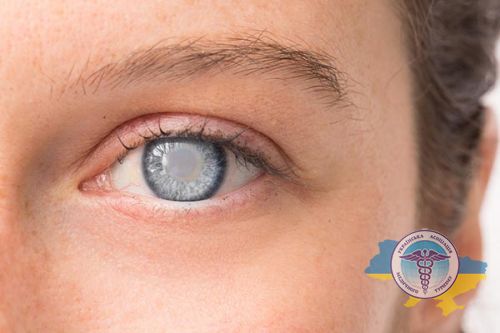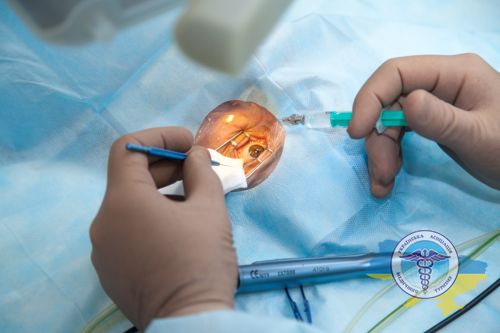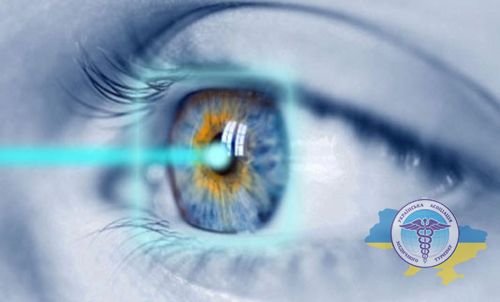Cataract treatment in Ukraine

Cataract is one of the common causes of reduced visual acuity and the development of complete blindness in patients over 50 years old. Partial and later complete opacity of the lens occurs. The main function of this lens is to refract and project rays from surrounding objects onto the retina. In case of cataract the ability of the lens to perform this function is reduced. The lens destruction gradually progresses, resulting in blindness, complete or partial.
Cataract treatment in Ukraine is carried out in public and private medical institutions. Leading ophthalmological clinics in Kiev and other large cities are equipped with expert-class specialized equipment, which allows providing high-quality and highly effective medical care for patients with various eye pathologies.

Want to know how much the treatment costs?
Answer a few questions and get preliminary information about the cost of diagnosis and treatment!
Causes of cataracts
Cataract is an age-related pathology. In more than 90% of cases, it develops in elderly people. However, there are a number of factors that can provoke or accelerate the development of this pathology:
- Genetic predisposition (heredity). If the parents had an age-related cataract, then the likelihood of developing this disease in their children also increases;
- Injury to the eyeball. For example, mechanical penetrating mucosal injury. Any injury to the eyeball requires qualified medical treatment, supervised by an ophthalmologist. This will help to avoid complications and the development of pathologies in the future;
- Inflammatory processes of eyes, postoperative complications. Any inflammatory diseases and complications after surgery can lead to the development of cataracts;
- Environmental impact. Ultraviolet light, ultra-high temperatures, increased background radiation, various chemicals are hazardous for lens.
- Pathological processes in the body. For example, metabolic disorders, diseases of the endocrine system (in particular diabetes), decreased immunity, etc.;
- Other eye pathologies. Glaucoma, myopia and other diseases can provoke an accelerated progression of cataracts.
Note! Approximately 51% of all cases of blindness are caused precisely by progressive or advanced cataracts. At the same time, the percentage of cases increases in proportion to the increase in life expectancy.
The main symptoms of cataracts
Unfortunately, it is very difficult to identify cataracts in their initial form. Lens clouding begins in the peripheral zones, and for a long time may not affect visual acuity in any way. It may take several years before the first symptoms of the disease appear.
The main symptom of pathology is a "veil" before the eyes. In patients with cataracts, a slight haze or fog appears in front of the eyes. Some describe this condition as looking through foggy glass.
Uneven vision loss complicates early detection of cataracts. One of the lenses, as a rule, is less affected, and a healthier eye compensates for this difference for some time. In order to identify the problem as early as possible, it is necessary to periodically check visual acuity, closing one or the other eye in turn.
Consider the main signs of progressive cataract:
- Deterioration of vision. When the center of the lens is affected, myopia occurs or increases. A person begins to see objects indistinctly, the image is blurred, he has to use glasses, change lenses to more powerful ones;
- Change in pupil color. This is a symptom of an advanced cataract. The range of changes in the shade of the pupil is very wide, it can become grayish, whitish, or acquire a slight yellowness;
- Change in the sensitivity of the eyes to light. It can manifest itself in intolerance to bright light, and at dusk or cloudy weather, vision improves. Sometimes the opposite picture can be observed - the colors of the surrounding world seem to fade;
- Difficulty visual concentration. It is difficult for a person to read the small print, it is not possible to focus his vision when sewing, drawing, etc.
Important! This symptoms may indicate other diseases of the visual organs. Only an ophthalmologist can make the correct diagnosis, after all the necessary examinations.
Diagnostics in cataract clinics
In Ukrainian cataracts clinics, all the necessary techniques are used to identify and eliminate pathology. The examination begins with the collection of anamnesis, after which the patient is assigned for hardware and instrumental diagnostic procedures.
The visual acuity, the level of peripheral vision, intraocular pressure, and also the refractive power of the cornea are measured. Fundus ophthalmoscopy can also be performed.
There are more than a hundred types of tests that allow you to fully assess the state of the organ of vision. Most of them are conducted contactlessly. The full range of procedures takes about an hour and a half.
Diagnostics using modern equipment is completely painless. In the course of the procedures, the calculation of the necessary parameters of the implant (artificial lens) can also be made.
Important! For the timely diagnosis of cataracts, an annual prophylactic examination of the visual organs is recommended for people over the age of 35.
Why is cataract surgery necessary?
Drug therapy for cataract is aimed at stopping the development of pathology. Unfortunately, no drugs can completely stop this process and save the patient from pathology. The only way to eliminate the disease is cataract surgery, during which the lens is replaced by an intraocular lens.
Such an operation takes about 15 minutes, the rehabilitation period is quick, painless, with minimal risk of complications. Surgery is the only treatment for cataract patients that will guarantee the restoration of vision.
Refusal of surgical treatment leads to a gradual loss of vision. In addition, as the disease progresses, the lens enlarges, which can lead to stagnation of fluid in the eye and, subsequently, to the development of secondary glaucoma.
Important! Timely referral to an ophthalmologist is the most important condition for the successful treatment of any eye pathology.
What surgical methods of cataract treatment are used in Ukraine?

All modern surgical methods are used in the treatment of cataracts in clinics of Ukraine. The choice of the appropriate method depends on the specific medical case - the condition of the lens, the degree of its damage and other factors. Let's consider these techniques in more detail:
- Intracapsular extraction. In this case, the lens and lens bag are removed. The method is traumatic, accompanied by a volumetric violation of the internal ocular structure, and can lead to serious complications. Recommended for patients with post-traumatic cataract with damage to the capsule bursa;
- Extracapsular extraction. During the surgical procedure, a wide incision is made in the cornea through which the lens is removed. The bag is not removed, the posterior chamber lens is placed in it. Most of the eye structures are preserved. However, the area of intervention is quite extensive, patients require long-term rehabilitation.
- Fakofragmentation. This is a minimally invasive, gentle operation with a minimal risk of complications. The nucleus of the lens is crushed into small particles using a special needle, after which it is removed through a small incision.
Benefits of laser cataract treatment

Another method of cataract treatment that is widely used in ophtalmology is phacoemulsification. This procedure is a laser cataract treatment. This is the most modern, fast, gentle and safe method. It differs from other cataract surgeries in the way it creates access to the lens.
In traditional operations the cornea is cut to extract the lens. During femtolaser correction the corneal tissue is "pushed apart" by the laser to the required depth (the laser acts on the tissue at the molecular level). After replacing the lens, the access site regenerates itself and no sutures are required. Getting a burn during the operation is excluded.
In most cases, laser correction is performed in the clinic on an outpatient basis using a local anesthetic, it takes no more than 20 minutes. The development of complications after the intervention does not exceed 1%. The operation is painless, after it there is no need to adhere to bed rest and rehabilitation in a hospital. As a rule, after 1-1.5 hours the patient goes home.
Patients notice an improvement in vision immediately after the lens is replaced. In most cases, vision is fully restored already on the first evening after surgery. In some patients, the effect of "super vision" occurs, that is, it becomes better than it was with healthy eyes.
Cost of cataract treatment in clinics of Ukraine
The cost of cataract surgery in clinics in Ukraine can vary greatly. It depends on a number of factors:
- stage of the disease;
- the complexity of the case;
- characteristics of the intraocular lens (brand);
- operation technique;
- the quality of the surgical equipment;
- the reputation of the clinic;
- ophthalmology surgeon qualification.
Today, cataract surgeries cost from $ 500. Phacoemulsification is more expensive. The cost of laser cataract treatment can range from one to two and a half thousand dollars.
Popular questions about cataract treatment
- Local anesthesia is sometimes uncomfortable. But the operation itself is absolutely painless.
- You will not be able to blink as the eyelid will be locked.
- Some vision will be restored immediately after the operation. Full recovery can take about a month.
- During the two-week postoperative period, you will not be able to engage in physical labor, sports, visit, saunas, baths, swimming pools, lift weights. Reading, writing, working at a computer, watching TV are allowed, but it is necessary to alternate this load with rest. All restrictions will be lifted in two weeks.
- Sometimes patients develop secondary membranous cataracts. This problem is easily fixed.
- Surgery is safe for elderly patients, as it is performed using local anesthesia, which, unlike general anesthesia, does not affect the body's systems.



